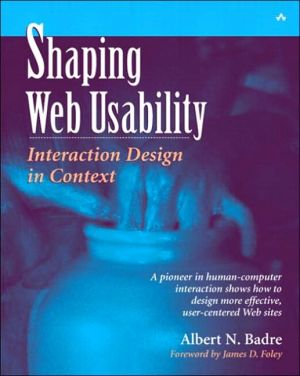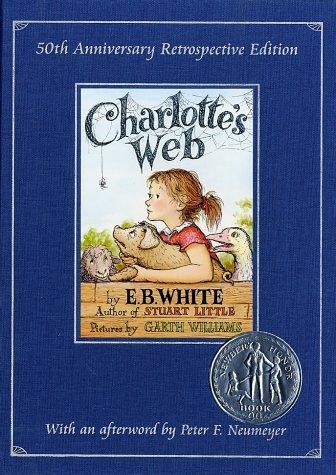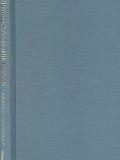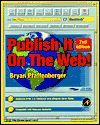Shaping Web Usability: Interaction Design in Context
Badre, Albert
Peter Gordon
"Al Badre's book is about an everlasting truth—a truth that many people, many companies, many organizations have learned the hard way. That is, when designing technological systems for people to use, one must take into account the characteristics of the users, and the nature of the task, and the knowledge, experience, biases, strengths, and weaknesses that the users bring to the task. In the case at hand, the task is using the World Wide Web."
—James D. Foley, coauthor of Computer Graphics: Principles and Practice
All successful computer applications have one thing in common: They are designed with the user in mind. Author Al Badre has for years contributed to the ideas and methods needed to make any computer application fully usable. In Shaping Web Usability, he adapts and applies this firmly rooted knowledge and practice specifically to the Web.
Badre recognizes that Web sites comprise a unique application, where designers face a host of complex issues, including dynamic content, a broad and diverse audience, multiple entry points, intolerance of steep learning curves, and one-click abandonment. And with the arrival of handheld devices, Web designers confront additional difficult issues. Offering a structured approach to Web usability, Shaping Web Usability describes several contexts in which each site must be viewed, from the genre to which it belongs to the individual page. The book then provides a concrete methodology for designing a site effectively for the convenience, practicality, and pleasure of its users.
Inside, Web designers will find useful information on such topics as:
- Links, buttons, site maps, and indexes for smooth site navigation
- Keywords and site search engines
- Effective design of home, content, and transaction pages
- Achieving a balance between Web usability and impressive graphics
- Retrofitting Web pages for small-screen and mobile devices
- Addressing users' information-processing limits
- Designing Web sites for older adults
- Addressing the international cultural context of the Web
- Specific guidelines to support design excellence
- Using an iterative design process with continuous testing to
- maximize Web usability
- Constructing storyboards and interactive prototypes
- Conducting task analysis to discover the sequence of events visitors use to reach their goals
Numerous real-world examples illustrate the book's concepts, techniques, and guidelines. This one book puts decades of knowledge and experience into the hands of every Web designer.
Library Journal
There is no shortage of material on web site usability (see Computer Media, LJ 3/1/02). Hot Text shines in its comprehensive coverage of online writing. One will find information on XML and writing for database-driven sites; creating FAQs, blogs and newsletters, and online r sum s; and becoming a web writer or editor. Although it does not break any new ground, Back to the User is a solid summary of current thought on the "user-centered" approach, covering both writing and design. It largely focuses on business sites, with additional information on e-commerce and branding. Both titles are appropriate for public libraries. Shaping Web Usability, while more academic, also addresses specific issues such as designing for older adults and handheld devices. Recommended for larger public and academic institutions. Copyright 2002 Cahners Business Information.
| Name in long format: | Shaping Web Usability: Interaction Design in Context |
|---|---|
| ISBN-10: | 0201729938 |
| ISBN-13: | 9780201729931 |
| Book pages: | 310 |
| Book language: | en |
| Edition: | 1 |
| Binding: | Paperback |
| Publisher: | Addison-Wesley Professional |
| Dimensions: | Height: 9.3 Inches, Length: 7.4 Inches, Weight: 1.15963149812 Pounds, Width: 0.7 Inches |














